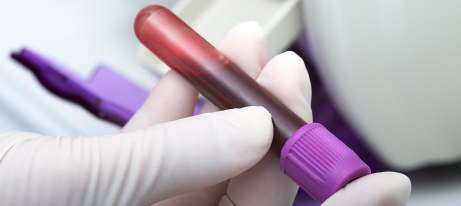
Gab13 / iStock
A new direct measurement tool suggests that Bisphenol A (BPA) levels in humans are drastically higher than previous estimates, raising new alarms about the safety of this endocrine disrupting chemical (EDC). The findings, published in The Lancet Diabetes & Endocrinology, debunk previous evidence by the U.S. Food and Drug Administration (FDA) that BPA exposure levels are safe and call into question previous methods used to measure BPA.
Studies have traditionally used an indirect process to measure BPA metabolites. This involves taking a crude enzyme solution made from the Helix pomatia snail to convert BPA glucuronide and BPA sulfate to free BPA. A liquid chromatography-mass spectrometry (LC-MS/MS) assay is then used to obtain whole BPA (free and conjugated) levels in urine.
The LC-MS/MS assay can only measure BPA—so the levels of conjugated BPA are measured indirectly, Roy Gerona, PhD, the study’s first author and an assistant professor at the University of California San Francisco, explained to CLN Stat. “A split sample of the urine is measured right away for BPA (free or unconjugated BPA). The other split sample is deconjugated enzymatically then the total BPA is measured by LC-MS/MS. The conjugated BPA level is derived from the difference between the total BPA and free BPA,” he said.
Gerona and his colleagues developed a new method that does not employ enzyme deconjugation. Instead, the LC-MS/MS method directly measures BPA, BPA glucuronide, and BPA sulfate. “Direct methods provide a tool to assess the accuracy of the widely used indirect methods,” wrote Gerona and his associates.
The investigators compared results from their new direct method versus results from indirect methods used by the Centers for Disease Control and Prevention and the FDA on synthetic urine spiked with BPA, following up with 39 human samples. The new direct method found much higher levels of BPA—exceeding 44 times the average amount reported by the National Health and Nutrition Examination Survey (NHANES). Disparities between the two methods increased with increased exposure to BPA.
Gerona hopes the study will bring attention to current BPA measurement methodology and that other experts and labs will take notice and assess this circumstance. “BPA is still being measured indirectly through NHANES, and it’s not the only EDC being measured this way,” according to Gerona, who moderated a scientific session on EDC at the 70th AACC Annual Scientific Meeting & Clinical Lab Expo in Chicago. Gerona spoke on the role of clinical labs in measuring EDCs in biological samples. “Our hypothesis now is that if this is true for BPA, it could be true for all the other chemicals that are measured indirectly,” he said in a statement.
These findings come on the heels of a consensus framework that identified the key characteristics of EDCs, flagging BPA as a disruptor that alters hormone distribution or circulating levels of hormones. In addition to pursuing the research on BPA, Gerona and his team plan to assess other chemicals that may have been measured incorrectly. These include environmental phenols such as parabens, benzophenone, triclosan, and phthalates.